This week on the Nomad Files I am joined by David Astley of xyzAsia. David is a retired British/Australian journalist now working out of the Philippines as a travel writer and editor. His blog, which he now writes in conjunction with two other retired Australian travel writers, is targeted at senior travellers in Asia.
Welcome, David. When did you fall in love with travelling? What made it such a passion of yours?
I started my media career in the UK as a cadet newspaper reporter but then moved to a leisure magazine group in London after 12 months. About a year after that they gave me my first overseas travel assignment to Poland, which is a fascinating country. That tweaked my interest in travel, but it wasn’t until I arrived in the Canary Islands about six months later that I knew I wanted to spend my life travelling.
I was 20 years old and Tenerife was the first place that I had been to outside of mainland Europe, and was the warmest and most beautiful place that I had ever seen. From that point on I knew I wanted to see what the rest of the world had to offer. Since then I’ve been travelling for 50 years and have visited 96 countries.
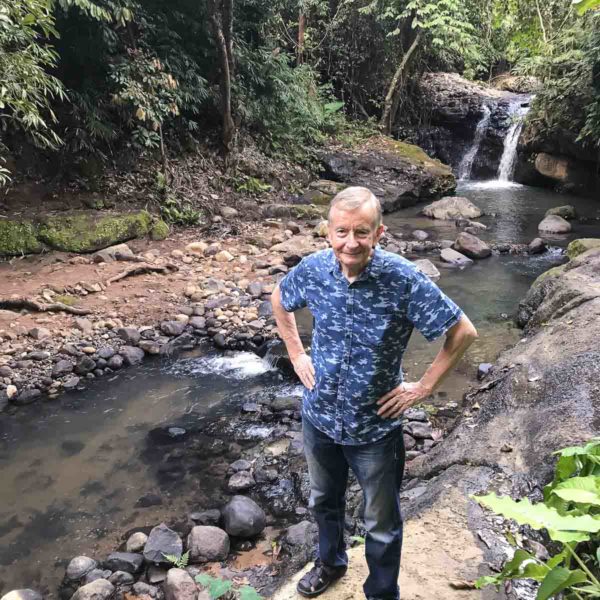
With so many countries under your belt, are there any that stand out as your favourites?
That’s really hard because every country has different attributes and different things that appeal about them. Having spent more years of my life in Australia than any other single country, I still think of Australia as home, but if I had to choose another country in which I would like to live, it would be Costa Rica. I love the rainforests there and the fact that the government is so environmentally conscious. The only reason I don’t is that it is too far away from family in Australia. So I retired to the Philippines instead. Here in Asia I would probably vote Bhutan as being my ‘favourite’ country because it is so clean, peaceful and beautiful, but it is not really an option in which to retire.
Can you let us in on a secret? What is one discovery you have made through your travels that really felt like ‘the road less travelled’?
I really love visiting parts of the world where you can travel in wilderness areas and not see another human being for a whole day. I’ve done that in central Australia and in Greenland, but there I was either too hot or too cold! The one place that I really enjoyed which would more than qualify as a ‘road less travelled’ was the high desert country in Bolivia. With some friends from Australia, we hired a four-wheel drive with a local driver/guide and cook in Tupiza and then headed west into the mountains – partly on dirt roads and partly off-road.
For the three days that we spent off-road we saw no other vehicles on one day and only two vehicles the other days. We drove across country that probably no other vehicle had ever traversed – it felt like we were driving on the moon. And we travelled as high as 16,000 ft where we came across boiling mud ponds that could have swallowed our vehicle in an instant.
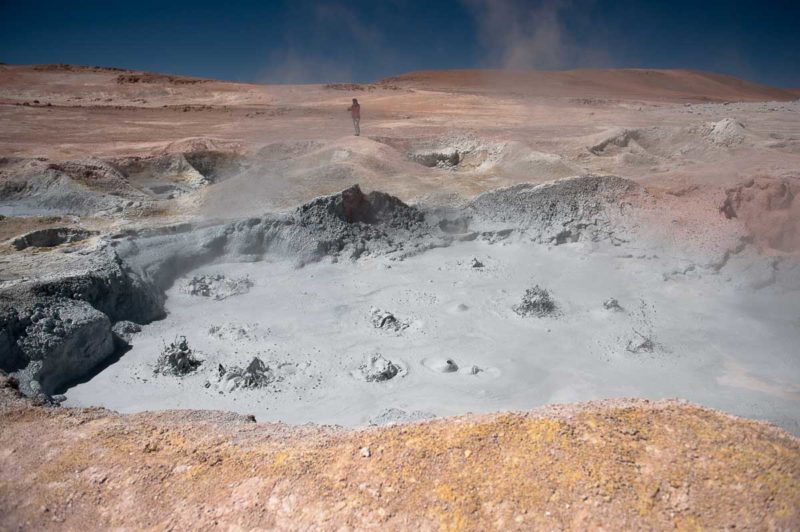
Is this place known for anything in particular?
This part of Bolivia is known for incredibly beautiful mountain scenery and vast lakes that are home to thousands upon thousands of pink flamingos. When you come across one of these lakes in the high altitude desert, and you are the only human beings there, it makes you realise what a tiny part of nature we represent. The emptiness of the landscape is almost overwhelming but you can keep looking at it for days and not get bored because the scenery is constantly changing in colour and texture, and the beauty of the landscape is almost overwhelming.
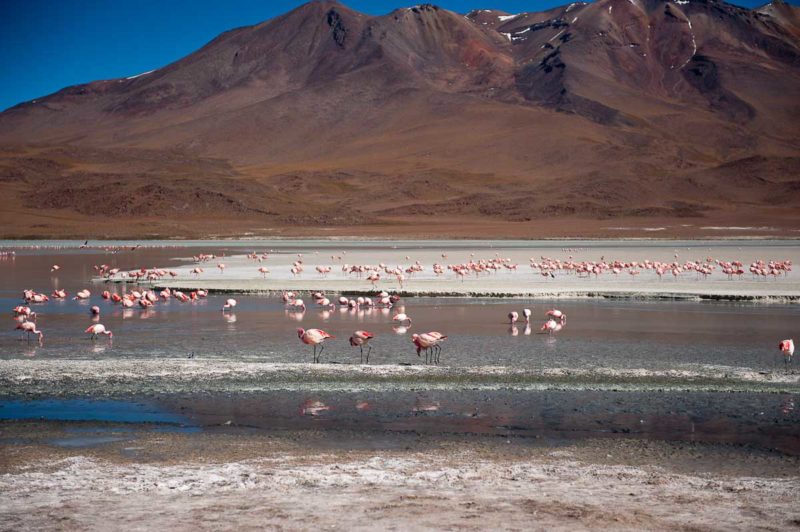
What did you do there and why do I want to visit?
The four-wheel drive expedition to the high desert country was part of a two-month overland trip we did from the Iguazu Falls in Argentina to Machu Picchu in Peru. We also visited the Salar de Uyuni salt flats, Lake Titicaca and La Paz on the way – highlights of the trip in themselves – but the week in the high desert country is what brings back the most memories. If you want to visit a part of the world that is remote but still reasonably accessible, incredibly lonely but still safe, and as rugged and beautiful as any mountain destination on the planet, the Bolivian Andes ought to be your number one choice.
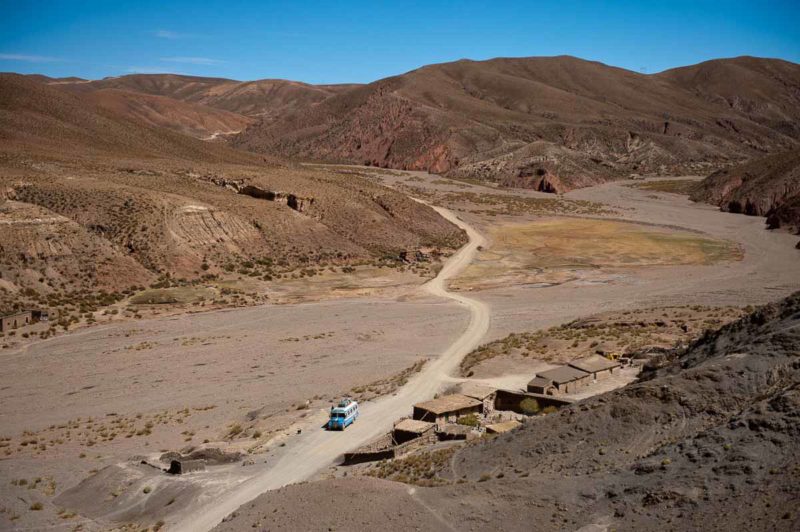
What took you there and how did you find out about it?
I did this trip immediately after my retirement from full-time work. It’s not a trip you can easily do by flying in and flying out in a week or two because you need a couple of weeks to acclimatise to the altitude. I came across a lot of travellers who were not enjoying their time in Bolivia because they were suffering from altitude sickness. So I planned to travel overland from Argentina staying in places a thousand feet or so higher each night so my body gradually adjusted. I found out about places to stay along the way by doing a lot of research on the web, because I’d not previously heard of anyone doing that (I wrote an article about that on my blog because a lot of people suffer similar problems when traveling to Lhasa in Tibet).
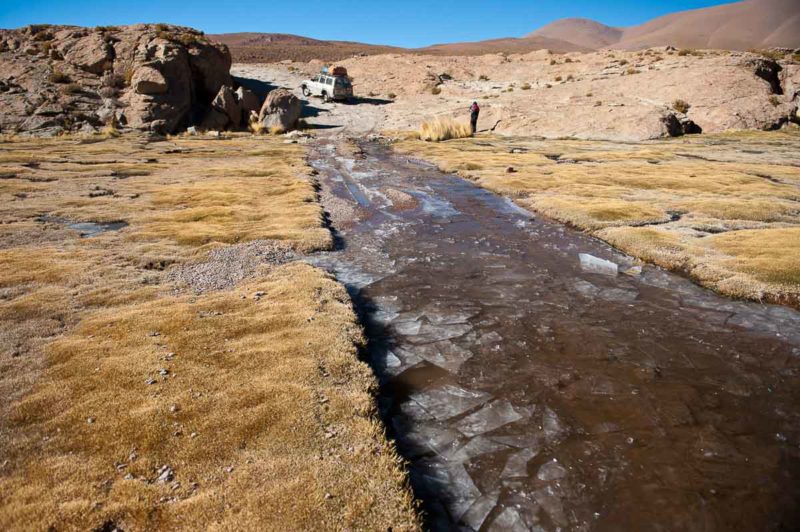
It sounds incredible, but why do you think it remains off the beaten track?
Whilst the Iguazu to Machu Picchu trip is popular with backpackers (you can do the whole trip by bus and train), the expedition to the high desert country remains off the beaten track because a four-wheel drive vehicle, driver/guide and cook does cost a bit, and some nights the accommodation will be very basic – like in a mud brick hut in below-freezing temperatures with no heating whatsoever (although on other nights better accommodation is offered).
The altitude will certainly be troublesome to many people if they don’t have the time to acclimatise as we did, and getting there could only be achieved overland when we went there because there were no airports at that altitude. However, there is now an airport at Uyuni, with a runway that is 4 km long – but many people are nervous about flying into such a high altitude airport because of the high speed landings.
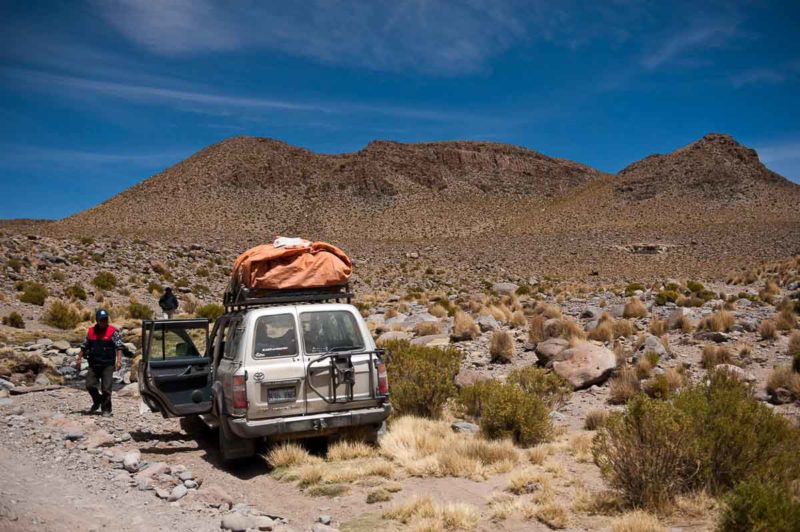
Tell me about the food. Was it different to anything you’d experienced before?
The food on the four-wheel drive expedition was surprisingly good. The driver cooked a meal during the day by the side of the vehicle using lentils, beans and dried vegetables, but it was very tasty. In the rest of Bolivia it was typical Spanish-type food with local ingredients which gave some of the dishes interesting indigenous flavours.
We ate a lot of salteñas (the Bolivian name for empanadas) on the road because they were sold everywhere. In remote regions I was a little wary about eating meat dishes, so I ate a lot of the local peanut soup. That has pasta, potatoes and vegetables in it as well, so is very nutritious and filling. For those who are not big on vegetables, pizza is sold almost everywhere.
What was the culture like? Did you have much interaction with the locals?
As is the case in most Latin American cultures, Bolivians are very family oriented and religious – although in the case of Bolivians we learned that their Catholic religion was influenced by what some may regard as pagan beliefs, especially in rural areas. When we arrived in La Paz there was some sort of festival going on because people were drinking and dancing in the streets – and we were told the parties had been going on for three days. The intoxicated women in their distinctive pleated skirts, brightly coloured shawls and traditional black bowler hats made for some interesting photos!
We didn’t have a lot of interaction with the locals, apart from our drivers and those in hotels and bus stations, because we didn’t speak good Spanish. Generally speaking the locals didn’t take much notice of us except in some of the small villages high in the mountains where the children would always come out to greet us.
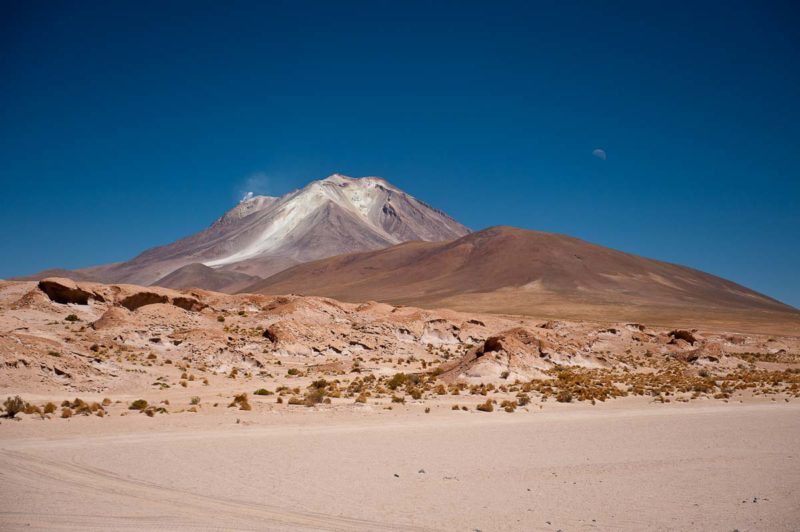
Beyond the things to do and see in Bolivia, what is your best tip on how to best experience this place?
The two best pieces of advice that I can give any traveller planning to spend time on the Andean plateau is to make plans to adjust to the altitude as we did, and learn some Spanish. We did the first but not the second. Had we known a little more Spanish, I think the trip would have been even more enjoyable. And do watch your bags. Whilst people in Bolivia are generally honest, remember it is one of the poorest countries in the world, so sometimes people will steal out of desperation. We did have a daypack snatched in a train station, and that was the only black mark on the trip (we got it back, but missing some items).
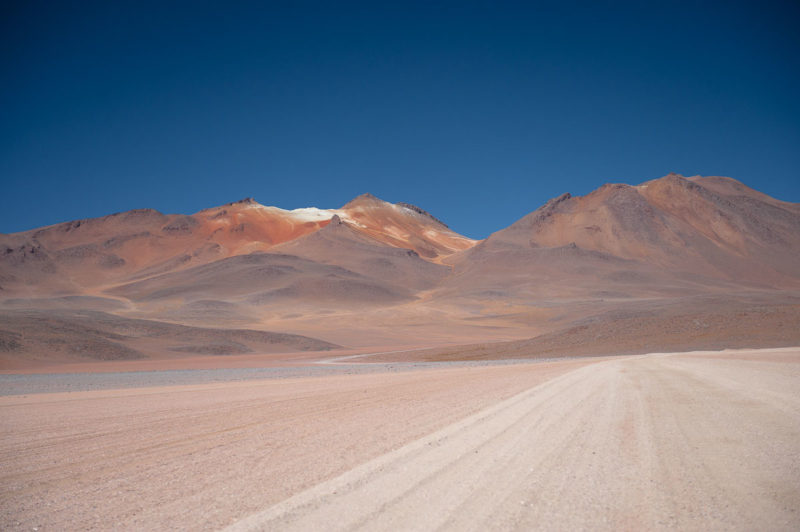
Last question, where do you live on the internet and social media for us to all come visit?
My Asian travel blog is called xyzAsia, we have a Facebook page at https://www.facebook.com/xyzasia and a Pinterest account at https://www.pinterest.com/xyzasia.
Did you enjoy this post?
Plenty more where that came from. Make sure to sign up for the mailing list to never miss the next one.

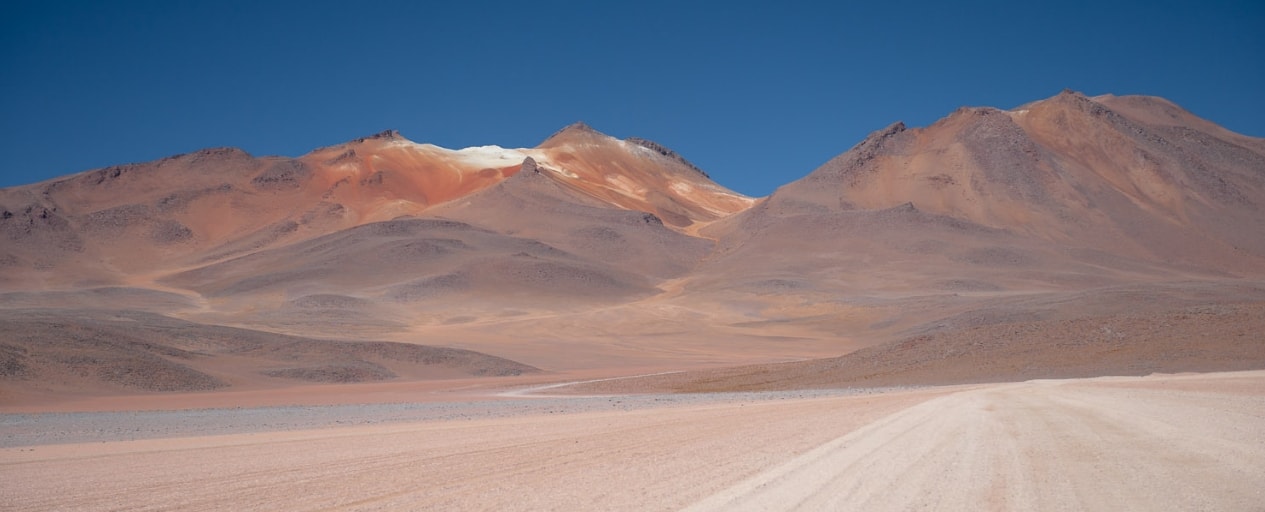

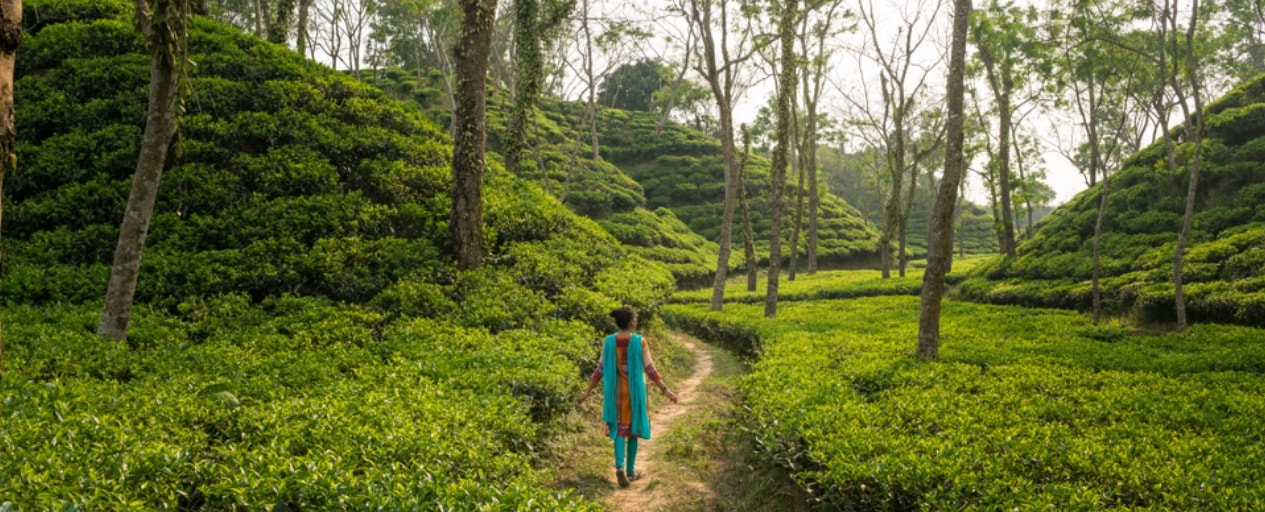
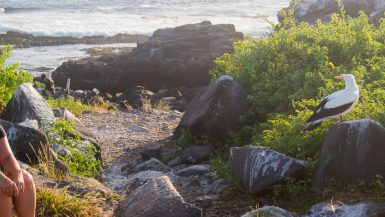
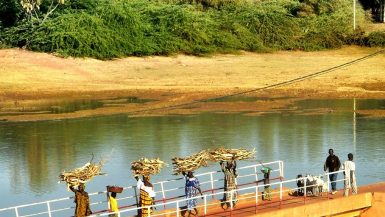
That sky is remarkable. So beautiful. Must be gorgeous to photograph under it!